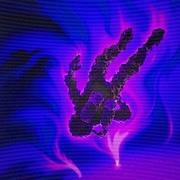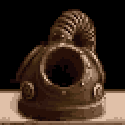|
I'm experiencing some strangeness with gnome's auto-mounter. I setup a raid 1 array, without lvm, and encrypted it with luks. I'm not using it for any system stuff and it's not needed at boot. It assembles itself fine through mdadm.conf, and the block is available at /dev/md1 after boot. I unlock the device using: code:However, when I run the luksOpen command, gnome pops up with it's own "Unlock Encrypted Data" dialog box, prompting for a password. It doesn't really do anything that I can tell. It makes an icon in "Places" showing "500.1Gb Encrypted Data", which if I click on, simply prompts me for the password again (regardless if I tell it to remember). I have a feeling there is some kind of conflict occurring between my manual commands and gnome, but it doesn't do anything at all for the 1Tb drive which is also encrypted the same way but is not part of any raid. So what I'm wondering is: 1) why doesn't gnome see the device until after I run cryptsetup when encrypted usb drives appear, unlock, and auto-mount just fine? 2) why is it only exhibiting this behavior with the raid and not the stand-alone drive? 3) what is it going to take to get it to exhibit the same behavior for all devices? Either by stopping auto-mouting all together or getting it to consistently show all the devices in Places so I can click on them and let it take care of the rest.  has failed me, and yes fam, hal, and all that other poo poo is working fine. has failed me, and yes fam, hal, and all that other poo poo is working fine.e: I just checked with a usb drive and apparently gnome doesn't create things in /dev/mapper/, that being the case, I have no idea if it even uses dm-crypt w/ cryptsetup or what the gently caress it's doing. twofish fucked around with this message at 06:18 on Apr 22, 2009 |
|
|
|

|
| # ? Jun 5, 2024 10:37 |
|
Onken posted:Hey I just upgraded to KDE4, what should I stick in ~/.xinitrc to launch on "startx"? code:Crusader fucked around with this message at 15:44 on Apr 22, 2009 |
|
|
|
Crusader posted:
Thanks for the tip, alas, it was not. The drat startkde script kicks me back to console after a couple of seconds for some reason, but going via kdm works fine. Hummm.
|
|
|
|
I'm about to kill myself. I'm trying to install a network driver on a new small PC that we want to run as an Centos Server for testing applications. We're doing inter-op testing for Digium for their Asterisk telephony platform. I'm very comfortable with Linux, but this is driving me nuts. I've spent a couple hours trying to figure out how to get them to install, but it's a nightmare when I have to change my KVM back and forth to try the commands I'm finding. I ended up configuring a serial interface on the box (which was easy) so I can console into it. (Turns out Vista doesn't include Hyperterm, but that was easy to fix). The MB is an Intel D945GCLF. I installed Centos 4.5 on it (5.2 gives me a kernel panic). (It's running Kernel 2.6.9-55.ELsmp). After installing it, eth0 doesn't come up. So I go over to the Intel website and download the drivers. Here's my console out put: code:code:Oh, I see, I didn't make the package first. code:Please help.
|
|
|
|
AzraelNewtype posted:Look into NX (there are free variants). It'll only work between boxes running xorg, but its performance is much better than VNC for the same reason RDP is. Hey, this is great. I run Windows on the one box, so I just set up an Ubuntu VM so I can remote using that... bizarro overkill, but it works. One question, how does NX manage sessions? I was expecting it to log in to my existing session logged in at home, but it seems to start an entirely new one. When I disconnected, I expected my NX session to go kaput, but upon reconnecting the session's in the same state I left it in. How is all this jazz managed? Is there any way to jump between sessions at home/remotely? I don't want to find myself in situations where I leave something heavy duty running in the remote session so it's chugging when I'm using it at home.
|
|
|
|
Jerk McJerkface posted:I'm about to kill myself. I'm trying to install a network driver on a new small PC that we want to run as an Centos Server for testing applications. We're doing inter-op testing for Digium for their Asterisk telephony platform. I'm very comfortable with Linux, but this is driving me nuts. First dont kill yourself XD.... The intel' driver dont work , contains many errors related with arrays, etc.. so try download the driver from the true owner : Realtek ^^ http://www.realtek.com.tw/Downloads/downloadsView.aspx?Langid=1&PNid=14&PFid=7&Level=5&Conn=4&DownTypeID=3&GetDown=false I'll uploaded the file to rapidshare too: http://rapidshare.com/files/224534908/r8101-1.011.00.tar.bz2.html And it MD5 signature : C603A7CD18CED13F81229C10933119F8 follow this step by step: 1) Uncompress the file: code:code:code:code:code:code:
|
|
|
|
I need some scripting advice. I've got a terminal server that allows connections to my handful of Cisco devices. To connect to these you just "telnet termserver.local deviceport" where deviceport is 2001 for port 1, 2002 for port 2, etc. I'm way too lazy to remember what each port is connected to so I thought there might be a good way to script out some kind of menu like: [1] Console to 2950 Switch 1 [2] Console to 2950 Switch 2 [3] Console to 3640 Router 1 [4] Console to 3640 Frame Relay Switch and behind the scenes it would just "telnet termserver.local switch1_port" if I hit 1, etc. Is there a quick and easy way to do this via some scripting toolkit or am I looking at coding something in C?
|
|
|
|
diafoirus posted:HOW TO DO IT IN A CONCISE AND EASY TO READ EXPLAINATION I swear, this is the most helpful post ever on the internet in the history of Linux help. I ended up researching and figuring out that Centos 5.3 has the right driver, so I'm installing that over the box right now. If it doesn't come up, then I'll apply your information. I asked our CTO, our resident Linux guru and he told me that I was a moron for not making the file first and I just had to figure out how to get the kernel-devel package on to the box. When I told him I couldn't get the NIC working to do a yum update he basically called me a moron, laughed at me and went back to his office.
|
|
|
|
Martytoof posted:After some googling I came up with this: code:
|
|
|
|
Is there some why to inspect an attached /dev/sdX device and know if it's attached via USB or SATA or wotnot? Some way that can be automated? I have a hands-free install disc (I didn't make it) that installs RHEL on every loving hard drive attached to a machine, even if a particular hard drive happens to be a removable USB device probably used for backup/moveable storage. I figure there's got to be a way to make the install smarter so that it doesn't install to a USB device.
|
|
|
|
TekLok posted:I'm experiencing some strangeness with gnome's auto-mounter. Okay I figured this poo poo out, finally. Required work-around the details of which follow: Gnome-desktop listens for devices from hal and creates anything not in fstab (or in fstab with the noauto option) as a link in places. The problem with this is it does not check with mdadm.conf or /etc/crypttab, so block devices that are used by cryptsetup or mdadm still register as okay to try to mount with gnome-mount. So Gnome still creates icons for those in "Places" and lets you think you can mount them, and thanks to Gnome's nasty habit of hiding away errors, they simply appear like objects that do nothing. It also exhibits this behavior when manually mounting fuse things like sshfs. This is annoying, stupid, and ugly. The creation of these annoying icons is not handled by gnome-volume-manager, so removing it does not help the problem. gnome-mount, pmount, etc, also have nothing to do with it. You have to create a hal policy like so: code:e: This honestly should be the default behavior, I don't know why it isn't. It pretty much means anyone who is using cryptsetup or mdadm, or both, without lvm or some other volume manager is going to have useless, broken, clutter in their menu. twofish fucked around with this message at 08:54 on Apr 24, 2009 |
|
|
|
Right, so I've switched back to Windows (for music production reasons) and I am unable to read my old ext3 partition with any freeware tools. I believe (or so google and a diagnostic tool tell me) that this is because the inode size is 256 rather than 128 for one reason or another. I honestly have no idea what that means but it's loving me about left right and centre. I have plenty of space on my primary hard disk to copy the files, but the partition is unrecognised by the tools I mentioned or by various live cds. The live cds are a few years old and the drive is SATA, but I'm not sure if that's the problem. I can also boot a Slackware install disk and view the ext3 partition without any problems, but the NTFS support is lacking so I am unable to copy the files to my windows drive. What are my options? I really don't want to flatten it as it contains a bunch of old tracks I made.
|
|
|
|
Download a new Live CD like Ubuntu 9.04, mount your NTFS partition, and get crackin.
|
|
|
|
Edit: Double Post
maskenfreiheit fucked around with this message at 20:42 on Mar 13, 2017 |
|
|
|
You have to create a partition using fdisk, then run mke2fs (or mkfs -t ext2 as in your example) on /dev/sdb1 to make an ext2 filesystem on the 1st partition.
|
|
|
|
GregNorc posted:So I'm trying to format the 500GB usb drive I just got (ext2 so OSX can write to it as well). Never done this from the command line before. I thought I need to run fdisk to erase all the data then mkfs. Formatting with fdisk runs fine, but trying to make the file system doesn't work (even though the drive has been unmounted) Linux nerds might scoff at this but doing these sorts of tasks through Webmin makes life easier/quicker.
|
|
|
|
Crossposting from the ubuntu thread, I linked an ubuntu laptop to my networks active directory and that's working fine, but is there any way I can make the home folder of ubuntu the home directory set in active directory(\\server\students\username\)?
|
|
|
|
Also, ext3 is backwards compatible with ext2, so can't you just format the drive as ext3 and mount it as ext2 in OSX?
|
|
|
|
inveratulo posted:Linux nerds might scoff at this but doing these sorts of tasks through Webmin makes life easier/quicker.
|
|
|
|
Zom Aur posted:Also, ext3 is backwards compatible with ext2, so can't you just format the drive as ext3 and mount it as ext2 in OSX?
|
|
|
|
Zom Aur posted:Also, ext3 is backwards compatible with ext2, so can't you just format the drive as ext3 and mount it as ext2 in OSX? That should work, it just might interfere with the journal when you go back to mounting it in linux. It works in emergencies but I don't know how safe it is to do on a regular basis. I was going to say ext2 for OSX is really crappy and the last time I tried it my machine crashed. However, it looks like someone has made fuse-ext2 and theres a dmg for OSX. So that might be somewhat better. Oh and for formatting, parted is a lot nicer. Just run parted /dev/sdb and then mkpart. Beginning of partition is 0 and end is 500G (well whatever parted says is the total space when you start it). It accepts using Terms like 100M or 500G so you don't have to worry about blocks or exact sizes in KB etc.
|
|
|
|
Quick question:
My problem is: htpasswd seems to be installed, but I cannot run it for some reason: code:
code:
|
|
|
|
Is it possible htpasswd is a script and the interpreter is missing or has some other problem? Or if it's a binary has missing libraries? Try running 'ldd htpasswd' in that case.
|
|
|
|
how can I backup my home folder including all the .hidden files? I dont really have much in the way of documents, but I want to keep all my settings for when I upgrade to ubuntu 9.04
|
|
|
|
rugbert posted:how can I backup my home folder including all the .hidden files? I dont really have much in the way of documents, but I want to keep all my settings for when I upgrade to ubuntu 9.04 To make a compressed tar archive of your home directory: code:code:Using '.*' is unwise, as it'll also match '.' and '..'
|
|
|
|
I'm not even sure this is unintended behaviour but my synaptic package manager doesn't have much in the way of uninstalled packages. For example, if I type 'tripwire' in shell I get a message about being able to install it with 'apt-get install tripwire', yet it doesn't turn up if I search for it in Synaptic. I have ticked all the package boxes, added medibuntu, uncommented everything in sources.list, run apt-get update and im using Ubuntu Jaunty although I had the same problem with 8.10 too. If nothing is wrong here, is there a different manager to see all of these packages or something?
|
|
|
|
Slave posted:I'm not even sure this is unintended behaviour but my synaptic package manager doesn't have much in the way of uninstalled packages. For example, if I type 'tripwire' in shell I get a message about being able to install it with 'apt-get install tripwire', yet it doesn't turn up if I search for it in Synaptic. Not sure if this helps but sometimes the quicksearch doesn't seem to display all packages - have you been using the 'proper' search in Synaptic? @rugbert, for future installs, if you keep your /home on a separate partition, you can reinstall Ubuntu as many times as you like and all your settings will carry across to the new install.
|
|
|
|
Col posted:Not sure if this helps but sometimes the quicksearch doesn't seem to display all packages - have you been using the 'proper' search in Synaptic? I definitely tried this but since it is now working fine it must have been before one of the above steps. So thanks, nothing to see here.
|
|
|
|
Slave posted:I'm not even sure this is unintended behaviour but my synaptic package manager doesn't have much in the way of uninstalled packages. For example, if I type 'tripwire' in shell I get a message about being able to install it with 'apt-get install tripwire', yet it doesn't turn up if I search for it in Synaptic. Tripwire is in the community-maintained 'universe' repository (i.e. it's packaged for ubuntu but may not get security or bug fixes as quickly, if at all). The universe repository may not be enabled on your install -- you can turn it on by running Synaptic, clicking Settings -> Repositories, then enabling 'universe' (possibly also 'restricted' and 'multiverse') edit: Sorry, read your post properly and saw you'd already uncommented them from sources.list 
|
|
|
|
I'm trying to make a cheap-rear end video recorder without doing the whole myth thing. After fighting for a few weeks getting my little Hauppauge thing to work, it does. Now I want it to record a certain couple of shows for me. Right now I set up a cron job:code:code:Tad Naff fucked around with this message at 00:36 on Apr 27, 2009 |
|
|
|
Apologies if this has been asked already, but I've installed Ubuntu Jaunty as a dual-boot with Windows 7. Everything's working swimmingly except for one thing--when I use a bittorrent client on any other OS, I can save downloaded files to my NAS, but in Linux it doesn't give me the option, even though I can mount and browse to the NAS just fine in Nautilus. What am I missing? I have to assume there's a way to save torrent data to a networked drive but I can't figure out how to do it. I've been alternately using Transmission, Deluge, and Vuze, FTR.
|
|
|
|
FeloniousDrunk posted:There must be a more elegant way of doing this though. Nothing wrong with a script in my opinion, but why not just use a single script for all of your shows and pass it 3 arguments- channel number, name of show, duration. I also threw a timestamp in so it's less likely that you overwrite things. code:code:
|
|
|
|
Jisei posted:Apologies if this has been asked already, but I've installed Ubuntu Jaunty as a dual-boot with Windows 7. Everything's working swimmingly except for one thing--when I use a bittorrent client on any other OS, I can save downloaded files to my NAS, but in Linux it doesn't give me the option, even though I can mount and browse to the NAS just fine in Nautilus. When you've got it mounted in Nautilus, it should create an icon on your desktop. The name of that icon is the drive to look for in the save-to window. It should appear in the pane on the left, along with "Desktop", "File System", etc.
|
|
|
|
Janin posted:When you've got it mounted in Nautilus, it should create an icon on your desktop. The name of that icon is the drive to look for in the save-to window. It should appear in the pane on the left, along with "Desktop", "File System", etc. That's what I figured, as previous installs worked that way, but it doesn't appear in the left pane even when the NAS is clearly mounted. My other drive appears, but no "Network" options appear. Any ideas?
|
|
|
|
falz posted:Nothing wrong with a script in my opinion, but why not just use a single script for all of your shows and pass it 3 arguments- channel number, name of show, duration. I also threw a timestamp in so it's less likely that you overwrite things. Thanks! This looks good, I've saved it in case I ever want to record something else. Mostly I was concerned/wondering if using "pkill" might result in broken files, and if vlc might have some sort of timer option that I hadn't found.
|
|
|
|
Lexical Unit posted:Is there some why to inspect an attached /dev/sdX device and know if it's attached via USB or SATA or wotnot? Some way that can be automated? In case anyone is interested, I put together a solution based on the information on this website.
|
|
|
|
kyuss posted:Quick question: After virtually every package I tried to install needed serious tweaking, I said gently caress this. Installing Debian now.
|
|
|
|
Edit: Double Post
maskenfreiheit fucked around with this message at 20:42 on Mar 13, 2017 |
|
|
|
GregNorc posted:So apt-get is a liitle wonky on debian. Did you try using iceweasel instead of firefox? I mean, I don't even understand what your problem is or why you're trying to add a repo.
|
|
|
|

|
| # ? Jun 5, 2024 10:37 |
|
Edit: Double Post
maskenfreiheit fucked around with this message at 20:43 on Mar 13, 2017 |
|
|



























